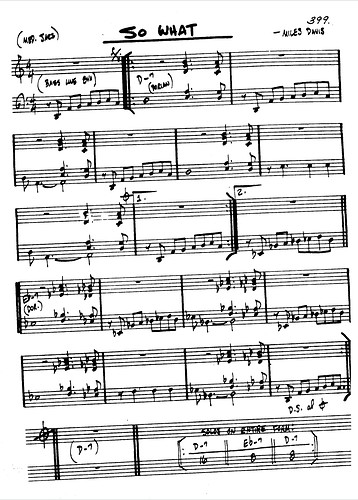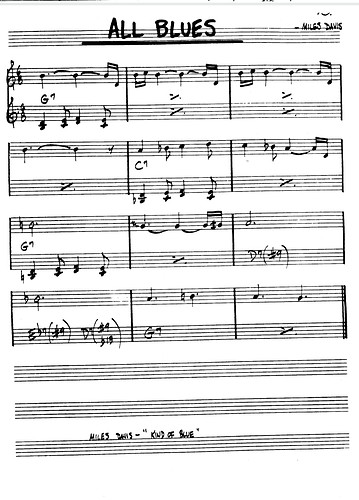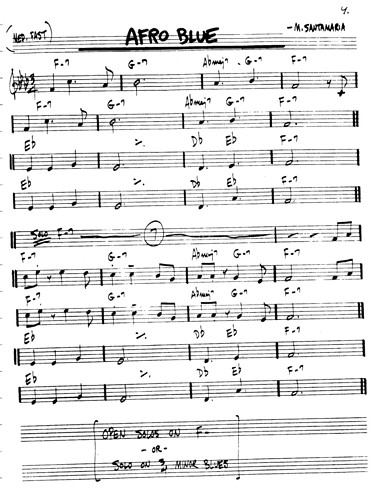Yes, as @John_E pretty much has already explained, that page (per song) is all there is (unless you find arrangements for combos or big bands etc. where someone used these ideas and expanded on them and wrote out the harmonies for brass and woodwinds etc.).
So What is a modal piece; it is based off of the dorian mode, and the melody is really just playing the dorian scale. What makes So What kind of easy, but really also tricky, is that it stays on that D-7 chord for a long time, and then modulates up half a step (to Eb-7) for eight bars and then back to D-7. So, it’s an A-A-B-A structure, but all the A’s are on that one chord (D-7). And, yes, the bass plays the melody here (nice exercise) and then, for the solos, you basically have to “agree” with the rest of the rhythm section on a groove - here, I would suggest what John also said: listen to lot of recordings of this tune.
All Blues is, haha, a blues, but it is in 6/8, which might require some getting used to.
Yes, but All Blues has a fairly iconic, “established” bass line that you might want to learn as well! Again, listen to the recordings.
Also, So What is fairly fast, All Blues can be much slower, but Afro Blue is again going at a fairly brisk clip, so these changes are coming at you in a fast pace. Afro Blues looks to have an ABCAB structure with solos on the C section. And it’s in 3/4.
This! It is actually because you don’t have much more information and thus you are supposed to fill in “all the rest” - this makes jazz very interesting, but also challenging.
Maybe a better piece to start with is Blue Bossa and, as started in B2B, Song For My Father.





